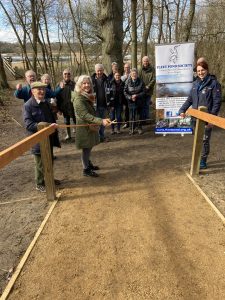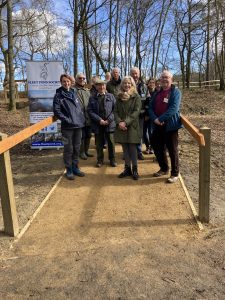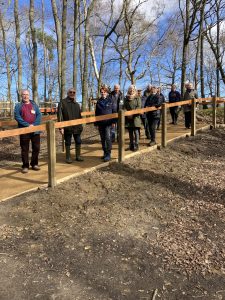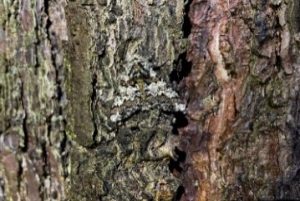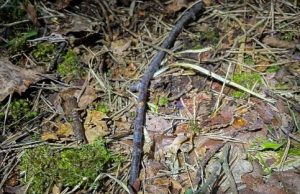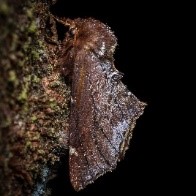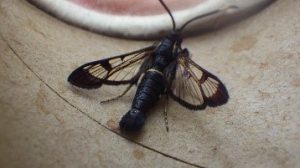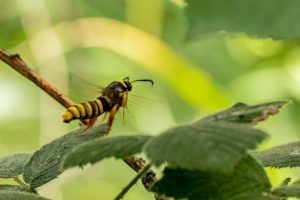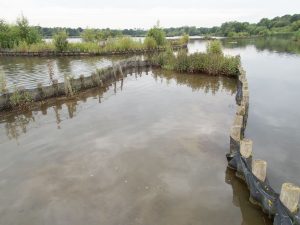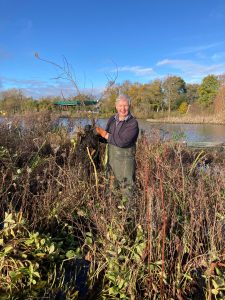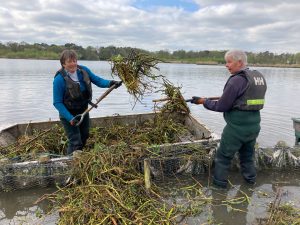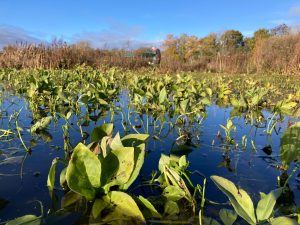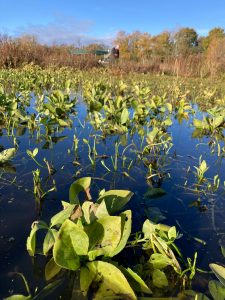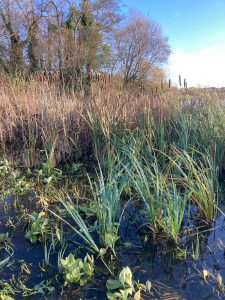Birding-wise it was a rather average three months, perhaps due to the weather and/or a lack of birder coverage since mid-October.
October and November were notably milder than usual, with much needed rain. In contrast, temperatures plunged during the first two weeks of December giving us the first real taste of winter. High pressure parked itself over Southern England, delivering heavy overnight frosts, daylight highs in the low single digits and ice over most of Fleet Pond. Milder conditions had returned by mid-December and prevailed through to mid-January.
Wildfowl sightings, including a highlight
Encouragingly, for the second year in a row wildfowl numbers remained at elevated levels throughout October and November, up until December’s freeze which forced most to move on. Peak counts, primarily prior to the freeze, included 72 Shoveler (October 22nd), 64 Gadwall (November 13th), 46 Tufted Duck (November 13th) and 150 Mallard (December 15th), all exceeding 2021 peaks for the same period. Moorhens reached near record levels with a count of 80 on November 13th while Coot numbers remained elevated with 71 on December 11th, slightly down on 2021’s numbers. Teal continued to disappoint with a high count of 20 on November 3rd and there were only a handful of sightings of Pochard, including four on October 21st.
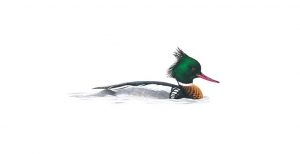
The wildfowl highlight was the discovery of a 1st winter male Red-breasted Merganser (illustrated above) cruising the Pond mid-morning on November 6th. This represented the first modern day record of the species at Fleet Pond. While an expected sight on South Coast estuaries in winter months, records of this saltwater-loving Merganser remain rare inland. Sadly, it remained in view for only 20 minutes before disappearing behind an island, never to be seen again but in the process becoming the 229th species of bird to be recorded at Fleet Pond since 1970!
Other less expected ducks included Wigeon, with five on November 17th and two on November 25th. Numbers of wildfowl were slow to build after December’s freeze with only Tufted Duck returning in any great number, reaching 37 on January 5th. Only one Pochard (male) was logged on January 9th.
Strong gull numbers
Other notable sightings included a late-afternoon build-up of 400 Black-headed Gulls on November 2nd, all leaving north to roost elsewhere, with 100 Herring Gulls passing over north that same afternoon. Loafing Herring Gulls remained a regular sight throughout November with a peak of 60 present on November 17th.

Great White Egrets (illustrated above right) put in their now expected late autumn and winter appearance, with singles present on November 4th, 6th, and 14th and December 5th and 29th, while up to two Little Egrets were ever present. Numbers of Great Crested Grebes peaked at 11 on November 6th. Winter surveys produced 35 Snipe on December 29th and a minimum of nine Water Rails were detected from the Reserve’s reedbeds on November 2nd (illustrated below).
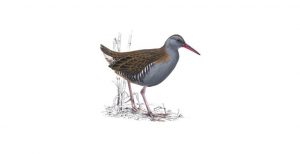
Passerines on site
Notable passerines included the last Common Chiffchaff of the autumn on November 14th and a peak of three Cetti’s Warblers on November 2nd with two remaining until at least the end of the month. Winter finch flocks were limited to Siskin with 150 on November 14th and 110 on December 29th. Notable late afternoon roost counts included 500 Jackdaw and 350 Redwing on November 2nd, 260 Redwing and 90 Starling on November 9th, and 330 Jackdaw and 190 Magpie on January 1st. A Raven was present on November 14th, leaving northwards (illustrated below).

For us birders, persevering through the next few drab weeks of winter requires commitment but the first migrants of spring are only weeks away, and if we’re lucky the weather will bring us a few birding surprises between now and early March. Good birding!
William Legge
Contributing Observers: Mike Bennett, Arun Bose, John Clark, N Hayward, Axel Kirby, Jonathan Mist, Benedict Roose, Graham Stephenson, C H Wan, and Tsui See Au Yeung
Bird illustrations —RSPB www.rspb.org.uk/birds-and-wildlife/wildlife-guides/bird-a-z/



